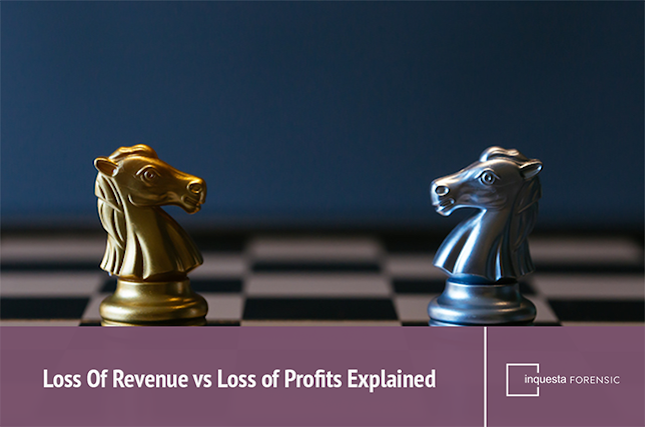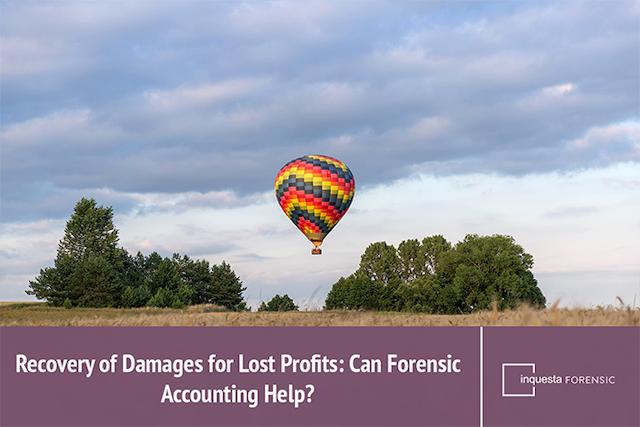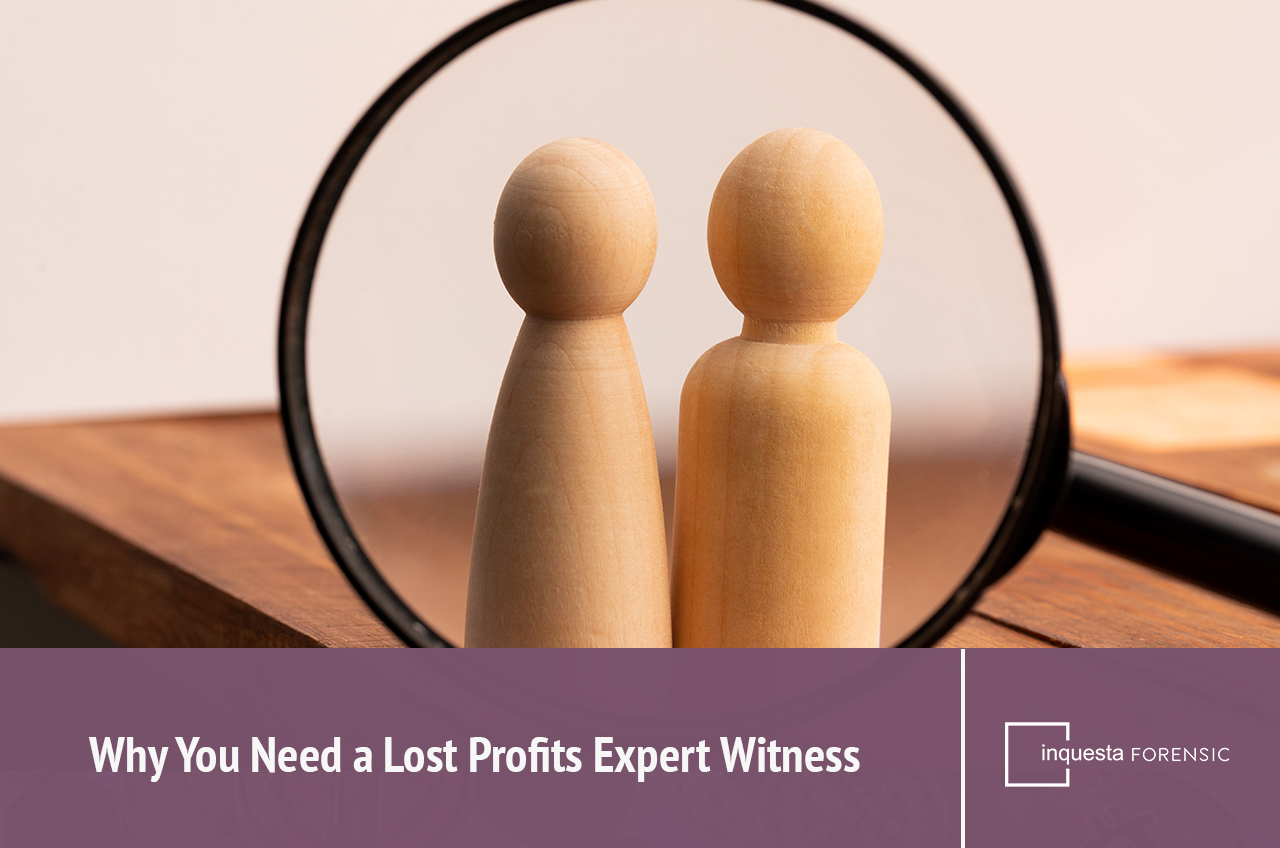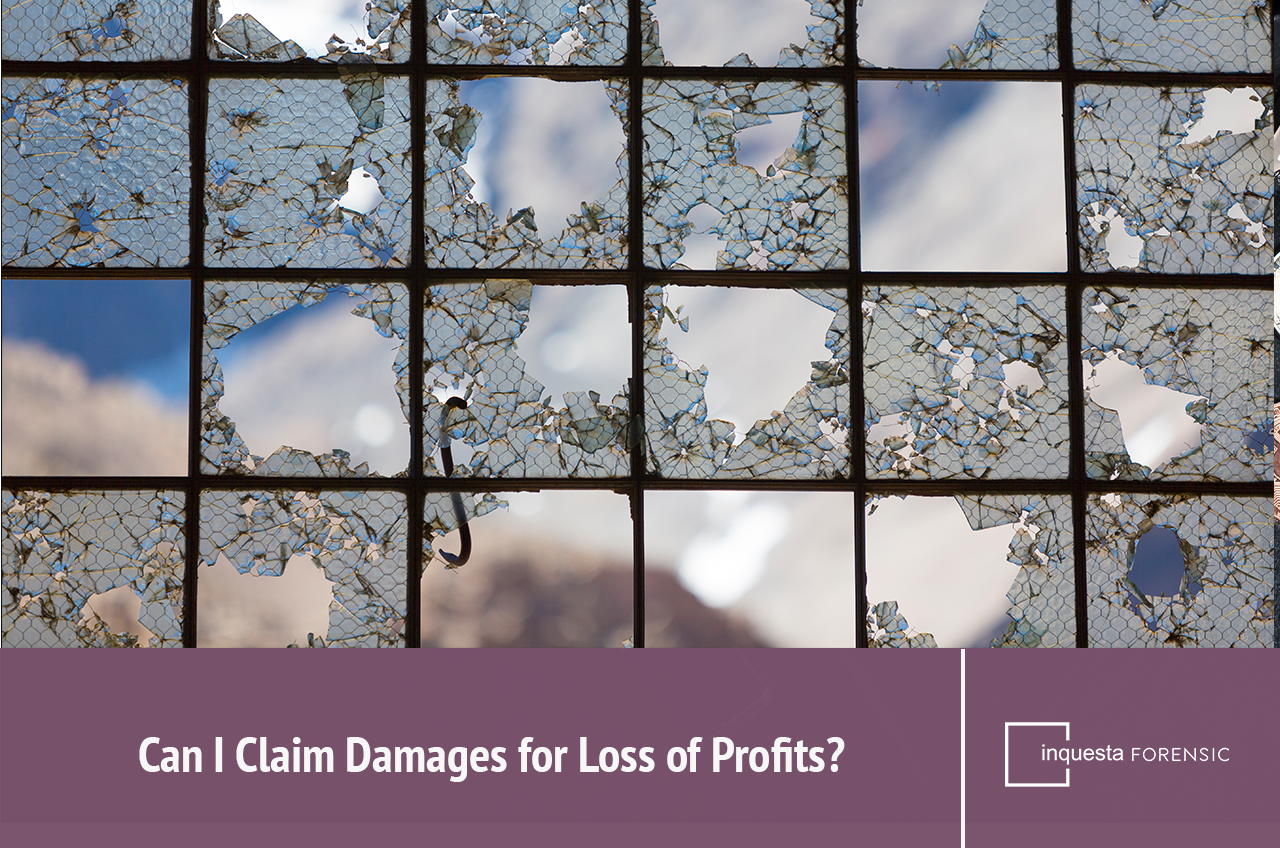In business, your profit margins are the difference between success and failure. There are a number of things that can affect this crucial figure, often at a moment’s notice. From natural calamities such as fires and floods, to fraud, breaches of contract, negligence, and beyond, there are a number of potential factors that can impact and jeopardise your firm’s financial stability and long-term viability.
Such events, often resulting in significant financial losses, will necessitate a comprehensive understanding of the best course of actions. Loss of profit claims are a legal tool utilised by business owners in order to seek compensation for a financial hardship. The aim of these claims is to determine a compensatory figure that is an accurate reflection of the losses incurred.
But what is loss of profit, and how do you best quantify its impact? Join us as we delve deep into loss of profits claims, dissecting their nature and unravelling the complexities that arise when trying to assess their impact.
What is Loss of Profit Centred Around?
Factors that can lead a business owner seeking compensation by way of a loss of profits claim include:
- Breach of Contract: One party failing to fulfil obligations outlined in a contract can result in serious disputes as well as financial harm. This can quickly result in a claim for lost profits. Common examples include contractors failing to deliver or a client cancelling a contract prematurely.
- Tortious Interference: Tortious interference takes place when a third party intentionally takes steps to disrupt a pre-existing contractual/business relationship. For example, a competitor spreading a malicious rumour about a company to clients, causing them to terminate their contracts and affecting profit margins.
- Negligence: Negligence takes place when somebody fails to exercise reasonable care in the production of goods or the execution of a service. For example, negligent manufacturing processes causing a dangerous product, impacting sales. If this leads to lost profits, a claim could be likely.
- Intellectual Property (IP) Infringement: Any unauthorised use or infringement of a party’s IP rights can lead to lost profits. IP infringement can include a business unlawfully copying your product and splitting the market.
- Fraud: Fraudulent activities, such as misrepresentation, deceit, and embezzlement, can cause significant financial damage to a business. If fraudulent behaviour leads to lost profits for another party, the victimised party may pursue legal action to recover the amount lost.
- Business Interruption: An interruption to a company’s standard operation, caused by theft, cyber attacks, the breakdown of key equipment, fires, floods, etc. can require expert analysis to quantify the extent of the lost profits.
In each of the above scenarios, businesses may pursue lost profit damages through legal action, seeking compensation for any losses incurred as a result of things outside of their control. These claims can involve complex legal processes and may require expert analysis to quantify the true extent of the lost profits accurately.
What is a Loss of Profits Claim?
What is loss of profit? Lost profits refer to when a business is faced with a financial setback that has impacted their profitability. Such disruptions to an operation may lead a director to pursue legal claims to compensate them for any profits lost.
The loss of profits claim requires thorough documentation and expert analysis in order to accurately quantify the true extent of financial losses suffered.
Something to remember as part of lost profit claims, when a company faces a period of disruption, be it to regular operations or to sales, income is not the only thing that will impact the business’s profit margins. Additional costs, in an effort to correct damages and mitigate financial loss, are to be expected and should be taken into account.
The question of what is loss of profit is rooted in multiple areas:
- Lost Revenue: Any revenue that the business would have earned if its operations hadn’t been disrupted. This is usually determined based on both historical and projected sales, business contracts, and other records.
- Mitigation Expenses: A business is expected to take steps to minimise losses during times of disruption. Costs incurred, such as temporary relocation, overtime wages, rebranding, or any other emergency correctionary measure undertaken can be included in a loss of profits claim.
- Fixed Costs: Just because the lights are off (as a result of an interruption or other factor) doesn’t mean a business won’t be incurring expenses. Fixed costs, such as rent, utilities, and insurance premiums will continue and contribute to the overall impact of an interruption.
Loss of profit claims can be filed with various parties, including insurance parties or as part of a legal claim. However, the figure you provide may not be accepted by default. The defending party involved, or the authority overseeing the case, may dispute your claims or question the amount of compensation you’re seeking. For a dispute to be resolved, some form of arbitration or litigation may be required.
To further support your loss of profit claims, there are a number of key documents that should be provided that substantiate your valuation. This can include financial statements, profit and loss statements, expense and sales records, and more.
To maximise your loss of profits claim, it is recommended that you contact an expert, with the most prominent of these specialists for cases such as this being forensic accountants.
A forensic accountant will have all the expertise and knowhow needed to uncover as clear a chain as possible to prove your claims.
How Forensic Accountants Calculate Loss of Profit Damages
Calculating loss of profit damages demands a comprehensive understanding of financial intricacies and legal nuance. Forensic accountants can quantify the financial impact adverse events have on a business’s bottom line. To do so, they will glean as much information as possible about how the company has performed, was expected to perform, and how it actually did perform.
It’s important to note that the process of coming to a precise loss of profit damages amount can be highly complex and may require significant expertise in financial analysis, investigation, and accounting principles. A forensic accountant will be able to work closely with you and any other relevant parties in order to ensure accurate and reliable calculations.
The process of calculating loss of profit damages will typically include the following:
Step One: Contextualise the Business’s Situation
The very first thing a forensic accountant will do on a loss of profits claim case will be to do whatever they can to ascertain the full extent of the business’s operations, its value, how it’s run day-to-day, etc. This is done in order to better contextualise the ongoing situation.
In order to do this, your forensic accountant will look to source and examine any and all financial records. They will also look at the operation, industry standards, current market conditions, and a number of other relevant factors that could have impacted the business’s profitability during the period in question.
Step Two: Identify the Total Loss Period
Another important aspect of the process is A) what caused the loss and B) how long it lasted. Once the event causing the disruption (fraud, negligence, breach of contract, etc.) is identified, forensic accountants will delve into examining the full extent of the period of loss. This will involve meticulous examination in order to determine the exact timeline of financial setback.
The factor that contributed to the period of lost profits must be carefully scrutinised to determine their collective impact on the business’s profitability. This is true whether the disruption was one singular period, like fire or water damage to a premises or a breach of contract disrupting your operation, a sequence of events coming together to contribute to a prolonged period of inactivity or operational deficiency, or stems from a more ambiguous issue over a longer period of time (it may be difficult to determine the period the firm was affected by IP infringement or tortious interference, for example).
Step Three: Perform a Baseline Profit Analysis
With the loss period in your accountants mind, they will then look to establish a baseline they can use to measure the deviation. This will entail a comprehensive analysis of historical financial records, including:
- Income statements
- Balance sheets
- Cash flow statements
By dissecting the company’s historic performance trends and extrapolating its future projections (considering factors like market growth and industry benchmarks) you can construct a ‘standard’ of what the business’s profits should have been had the adverse event(s) not taken place.

Step Four: Utilise Comparative Analysis
Utilising the pre-established baseline, forensic accountant will then conduct a comparison between the anticipated performance of the business and the reality during the loss period.
In order to get a clear image, it’s important to look at a number of key metrics, such as:
- Revenue streams
- Expenditure patterns
- Profit margins
By juxtaposing these two amounts against each other, you can pinpoint the disparities between the expected course of events and what happened due to the adverse event and quantify the loss. This will, in turn, go a long way towards illuminating the precise impact on the firm’s financial health.
Step Five: Consider any Mitigating Factors
Before coming to any concrete conclusions it’s important to consider any potential mitigating factors that may have affected the extent of the loss of profits claim. This will most commonly refer to any efforts made to mitigate the financial loss (cost-cutting measures, insurance claims, revenue stream diversification, etc.)
Without factoring this in, you are unable to ensure a comprehensive and accurate evaluation of the net impact of the period on the firm’s bottom line.
Step Six: Report Findings
The culmination of this process entails the documentation of any and all findings, and the preparation of comprehensive reports. These reports act as a bank of figures and corroborating figures, providing a complete picture of the losses incurred.
These reports can be vital to ensuring you can make key business decisions from a position of strength and knowledge.
Empowering Financial Resilience with Forensic Accounting Excellence
So, what is loss of profit? As we draw the curtain on our exploration of loss of profit claims, it should become clear that navigating this process will demand a steady and experienced hand to guide you. With a wealth of experience and an unwavering commitment to offering an excellent service, our team is perfectly positioned to serve as your trusted allies in the quest for financial restitution.
A forensic accountant will play a crucial role in your loss of profits claim by meticulously analysing financial records, transactions, and all other relevant data in order to quantify the true financial impact on your business. Our ability to interpret complex financial data and examine key documents allows us to provide as comprehensive and credible an evaluation of your lost profits as possible, strengthening your case and hopefully facilitating fair compensation.
At Inquesta Forensic, we pride ourselves in our wide variety of bespoke forensic accounting services, each tailored to address the unique needs and challenges that your business could be faced with. From helping to contextualise your financial situation to meticulously calculating loss of profit damages, our suite of services encompass every aspect of the forensic accounting process and ensures you receive a clear and transparent approach that promises to safeguard your financial interests in the face of all manner of issues.
At Inquesta Forensic, expertise meets excellence in our every endeavour. Get in touch with a member of our team today and embark on a journey towards renewed financial resilience and peace of mind.
- The Essential Role of Forensic Accounting in High Net Worth Divorce
- How to Value a Startup Business: A Guide for UK Entrepreneurs
- Pig Butchering Scams: Guide to Crypto Romance Fraud
- Shareholders’ Disputes: How Business Valuation Helps with Shareholder Dispute Resolution
- 11 Costly Business Valuation Errors (And How to Avoid Them)








